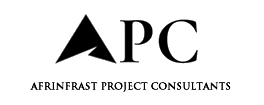
RIBA and the Fawcett Society have collaborated to produce Build it Together: Progress and planning towards gender equity in the architecture sector
The Royal Institute of British Architects commissioned the report into women in architecture, while the Fawcett Society produced it using both new testimony and data from the Office for National Statistics.
Over 600 women working in the profession gave testimony for the report, and several results highlight the slow progress being made.
Pay gaps, rough cultures, and less recognition for women in architecture
Of the women surveyed, 83% said they felt that having children had negatively affected their career progression. A large number also described that work cultures promoting long work hours, presenteeism, and exclusionary networking practices, create what they called an “old boys’ club.”
Half of the women surveyed said they had experienced harassment or misogyny at work, but only 11% of those who had reported it said they received a satisfactory response from their employer, with a lack of formal HR structures, insufficient policies on maternity and menopause, and inconsistent procedures for dealing with discrimination being frequent issues.
As a result, 47 recommendations have been made by RIBA to encourage gender equity in the industry, 20 of which are aimed at RIBA itself.
Dr Valerie Vaughan-Dick, chief executive, RIBA, said: “This report lays bare the scale of architecture’s gender inequity crisis. We cannot afford to lose talented women to outdated workplace cultures or structural inequity.
“We therefore accept the report’s findings and note the recommendations – committing ourselves to meaningful action. Our plan, shared today, sets out practical steps to drive change both internally at RIBA and across the profession. Equity is not just a fairness issue; it’s fundamental to the future and integrity of architecture”
Some of the recommendations include:
- Ensure they have a comprehensive suite of employee policies, including those relating to equality and diversity, which are available to employees and prospective employees, and which are regularly reviewed in collaboration with staff.
- Monitor the diversity of their staff and boards, set appropriate internal targets for
representation and report on these annually. - Conduct regular staff satisfaction surveys which ask questions about wellbeing and
workplace culture, and act on the findings of these. - Publish parental and maternity leave policies that follow best practice; do not wait until the policy is needed before creating it.
- Have a specific strategy and process to support people going on, and returning to work from, maternity leave including following the UrbanistasNW “Careers, Kids and Caring Responsibilities Toolkit” and make this available to staff.
- Provide explicit rationale for policies requiring employees to have a presence in the
office and allow working from home where possible. - Offer flexible working options and discussions to all employees as standard.
- Implement structures to record out-of-hours work, including work undertaken at home, and audit this every six months.
- Undertake risk assessments under the prevention duty to ensure they are taking steps to prevent sexual harassment.
- Provide information to all employees about what constitutes appropriate behaviour and how to report anything which does not meet this standard.
Penny East, chief executive of the Fawcett Society, said:
“Fawcett is committed to equal and inclusive workplaces for women. We see from this project and from our research, that there are too many women in the architecture profession who are being paid less or treated differently to their male colleagues. However, it is also clear that there is a real determination from women, from sector leaders, professional networks and from RIBA to pursue gender equality in architecture.
“We hope that this report is read and absorbed not just by those who are already persuaded of the challenges, but by those who dismiss the issues or perhaps even perpetuate the problems directly.
“Inequality affects every sector, every workplace. It cannot be up to a small group of people to resolve this, but instead a sector-wide effort that requires employers and practitioners to do things differently. We hope that the recommendations set out here provide a helpful and practical guide to make those changes happen. We thank every woman and every expert who shared their experience and their time with us so generously”
The post New report shows continued deep issues for women in architecture appeared first on Planning, Building & Construction Today.

